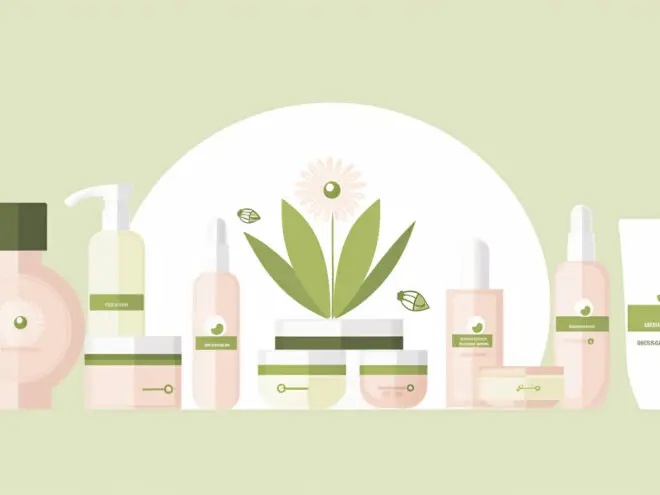Skincare • 07/15/2025
How to Tan Safely: Your Guide to a Happy, Healthy Glow

Revivalist is a reader-supported endeavor and our posts may contain affiliate links. When you buy through links on our site, we may earn an affiliate commission.
Dreaming of that sun-kissed glow, but worried about the risks? You are not alone. For many women, the desire for radiant, bronzed skin comes with a nagging concern: how can you tan safely without sacrificing your skin’s health?.
What Are the Risks of Tanning and UV Radiation?
Ultraviolet (UV) radiation is naturally emitted by the sun. We cannot see or feel UV rays — this is not why we feel sunlight as warmth, that is caused by infrared radiation.
When skin is exposed to UV radiation, it produces melanin to protect itself from further damage. Melanin is the pigmentation in skin, so after exposure to UV radiation, your skin will darken. This is what we call a tan — but it’s actually a defense mechanism by your body. Skin cell DNA can be damaged by too much UV radiation, and that can lead to skin cancer as well as premature aging. In fact, research shows that a huge 80% of skin cancers are caused by excessive UV exposure.
So, knowing that risk, how can you tan safely? You might immediately think: tanning beds. And for a while, sunbeds were indeed thought to be a solution. But now we know differently.
Are Tanning Beds Safe?
No, tanning beds are not safe. They work by emitting artificial UV radiation, which carries the same risks as the real thing.
All major health organizations agree that there is no safe way to use tanning beds. In 2009, they were officially classified as carcinogenic by the International Agency for Research on Cancer of the World Health Organization — that’s the same category as asbestos and tobacco. The evidence is clear that tanning beds increase the risk of skin cancer for everyone, regardless of age or skin type.
So, if you are looking for ways to tan safely, sunbeds are definitely not the answer. But the good news is that it is possible to get that sun-kissed look without harming yourself, provided you follow some common-sense guidelines.

Is There a Safe Way to Tan Naturally?
It is possible to tan safely outdoors, provided you are mindful of the risk and act responsibly. This means:
- Using broad-spectrum sunscreen (SPF 30+)
- Avoiding peak UV hours
- Change positions frequently
- Avoid falling asleep
For some skin types, UV radiation can become harmful after as little as 5 minutes of exposure on unprotected skin. The SPF factor of your sunscreen will help you calculate how long you can stay in the sun, but it’s only a rough guide.
For example, if without sunscreen you would normally burn in 10 minutes, wearing an SPF 30+ sunscreen means you may be able to stay in the sun for up to 300 minutes (10 x 30) or five hours. However, sweat or exposure to water will reduce the sunscreen’s effectiveness — to be sure, reapply it every two hours or after swimming.
It’s important to note that the UV radiation level does not correlate with temperature levels. The UV index predicts UV intensity levels, and it can be high enough to cause skin damage even on cloudy or cooler days. Be vigilant and build a healthy daily sunscreen habit, regardless of the weather.
Does Skin Type Matter for Safe Tanning?
Yes, understanding your skin type is essential for safe tanning. The Fitzpatrick scale is an effective way of classifying skin types as they pertain to sun safety:
- Type 1: This type of skin burns rather than tans and is typical of people with very pale skin and fair to red hair.
- Type 2: This type of skin tends to burn and doesn’t tan easily, and is typical of people with white skin and blue eyes.
- Type 3: This skin may burn at first but then tan, and is usual for those with fair skin, brown eyes and brown hair.
- Type 4: This skin tans easily with a little initial burning and usually relates to people with light brown skin and dark hair and eyes.
- Type 5: This easily tanned skin rarely burns and is typical of people with brown skin and dark hair and eyes.
- Type 6: This type of skin never burns but tans to a darker shade, and usually relates to those with black or dark brown skin tones, with dark eyes and hair.
People with Type 1 skin should generally try to avoid sun exposure where possible, and should at least wear protective clothing and the highest level of sunscreen. People with Type 2 skin should similarly be very careful.
Types 3 and 4 have a slightly lower risk of sun damage, but should still wear a broad-spectrum sunscreen and take sensible precautions as outlined above. If you have Type 5 or 6 skin, it’s important to note that you are still at risk of skin cancer. Even if your skin never burns, damage can still occur. Choose a sunscreen made for your skin type and don’t be complacent.

What Is Sunless Tanning? Is it Safe?
Sunless tanning generally means using products that give the effect of a suntan but without any UV exposure. Think self-tanning or fake tanning creams, lotions or sprays that you can apply to your skin. They work by inducing chemical reactions in your skin that mimic the natural tanning process.
The FDA approves some spray tans and tanning lotions as safe for external use, specifically those containing dihydroxyacetone (DHA). However, it has not approved any other kind of sunless tanning product as safe.
That doesn’t necessarily mean other lotions and potions are not safe, but it does mean that they may not work, and it definitely means you should be careful and do your research before using them. Specifically, be careful with tanning pills that contain canthaxanthin, which can be harmful in large amounts and may not, in any case, achieve the tan you want.
When sunless tanning products first appeared, they had a reputation for leaving streaks or orange palms and an unnatural appearance. Fortunately, sunless tanning technology has improved, and FDA-approved self-tanning products are now a good, safe way to get a tan without UV exposure, and can offer you that sun-kissed glow without fuss.
Remember, however, that sunless tanning products do not offer any UV protection, so even if you have achieved a beautiful sunless tan, you will still need to wear sunscreen as normal.
Skin Care Before and After Your Tan
Whether you are tanning naturally outdoors, with a spray tan or with a sunless tanning lotion, it’s a good idea to exfoliate your skin before you start. This will remove dead skin cells and create a smooth skin surface, helping to avoid patchiness and ensure a uniform tan color.
Exfoliation before tanning can also help your tan last longer. It kick-starts the skin cell renewal process, allowing newly tanned cells to appear more vibrant for longer.

After natural tanning, skin care matters too. Keep your skin hydrated — an after-sun product with aloe vera, shea butter or hyaluronic acid can help with that.
You should also monitor your skin for signs of damage. At least once a month, check your skin, especially regularly exposed areas or anywhere that was previously sunburned, and look for:
- Any new moles, or changes in size, shape or color of existing moles
- Any skin areas that are itchy, painful or bleeding
- Any unexplained lumps, bumps or scaly patches
If you do notice any of these things, schedule a doctor’s appointment to be on the safe side. While often nothing to worry about, these issues can sometimes be early signs of skin cancer. If caught early, most skin cancers can be successfully treated, so don’t hesitate to seek medical advice.
Tanning and Your Natural Beauty
Many people love the sun-kissed glow of tanned skin, and following this guidance on safe ways to get a tan will go a long way toward getting the beautiful, healthy glow you want.
However, if you would rather embrace your natural skin tone as it is, without tanning, that’s also a wonderful choice. Natural skin tones that haven’t tanned are just as gorgeous as those that have.
If you want to tan, make sensible, healthy choices about how to tan safely, and enjoy the process! But remember, whether you love your natural complexion or enjoy that extra glow, the most important thing is that you feel good in your own skin. Know that you are radiant — no matter your shade.
Subscribe to Our Weekly Newsletter
We would love to connect deeper with you!


